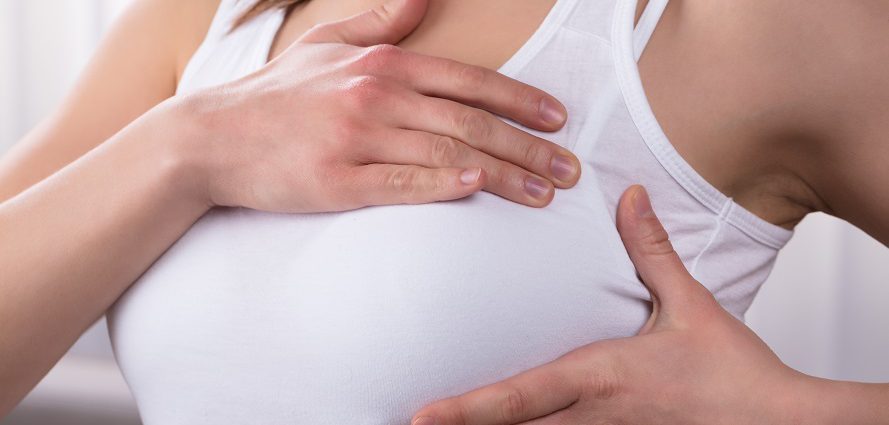What Is Capsular Contracture?

Capsular contracture is a breast augmentation complication that develops when internal scar tissue forms a tight or constricting capsule around a breast implant, contracting it until it becomes misshapen and hard. As a result, the breast may feel painful and stiff, and the capsule may affect the appearance or shape of the breast.
Capsules actually form around every breast implant, silicone or saline. Scar tissue is the body’s natural response to the placement of any foreign object. It is only when that scar tissue tightens or contracts and restricts the movement of the implant that the breast may develop capsular contracture.
Symptoms of capsular contracture often begin within months of the original breast augmentation surgery, but capsular contracture can occur at any time. About 75 percent of capsules occur within the first two years following surgery. Symptomatic capsular contracture rates are lower with saline implants than with silicone gel implants. If a capsular contracture occurs around a gel implant many years after augmentation, it could be a sign of an implant rupture.
Who’s at Risk of Developing Capsular Contracture?
Predicting who will develop capsular contracture and when it will happen is nearly impossible. It occurs in about 5 percent of women who undergo breast augmentation with implants.
The cause of a “silent” capsular contracture — that is, one without an obvious precipitating event such as trauma, hematoma or radiation — is unknown. Many theories about capsular contracture have been proposed over the years, but currently the most widely accepted cause is a low-grade infection.
Other factors that may increase the risk of developing capsular contracture include:
- Postsurgical complications like hematoma (broken blood vessels under the skin), seroma (collection of fluid under the skin) and bacterial infection
- Autoimmune disorders, like lupus
- Severe breast trauma
- Radiation therapy
- Inadequate skin coverage or using too large an implant for the amount of skin coverage
- Silicone molecules that leach into the pocket holding the implant (primarily an issue with older silicone gel implants)
Warning Signs of Capsular Contracture
Symptoms of capsular contracture usually emerge slowly and may first be noticed as a high-riding or misshapen breast. As firmness increases, the breasts may feel tight or even painful, especially when you are lying on them. The breasts can appear very round, almost “ball-like,” and visible rippling may also occur.
The Baker grading system is used to measure the degree of capsular contracture. The four levels of capsular contracture on this system include:
- Grade I: The breast is soft and looks natural.
- Grade II: The breast is slightly firm, but looks normal.
- Grade III: The breast is firm and looks abnormal.
- Grade IV: The breast is hard, painful and looks abnormal.
Treating Capsular Contracture
There are only a few non-surgical treatments for capsular contracture. The only treatment that guarantees the condition won’t return is the permanent removal of the implants and surrounding scar tissue. Capsular contracture is one of the reasons that women opt for breast implant removal.
In the past, some surgeons would squeeze the affected breast(s) and implant(s) to break up the scar tissue capsule, but this technique frequently resulted in complications and is no longer recommended. Other treatments involve the use of sound waves to soften the breast, oral vitamin E and anti-inflammatory leukotrienes such as Accolate or Singulair. The effectiveness of these treatments is, at best, based on anecdotal evidence, and they only occasionally provide significant improvement.
The best treatment for capsular contracture is to go back to the operating room and have your surgeon release the scar tissue surgically. Talk to your surgeon about which treatment he or she recommends to treat your capsular contracture.
Steps to Avoid Capsular Contracture
Decreasing your risk of developing capsular contracture is the best way to avoid this complication. Some surgeons recommend placing the breast implants under the pectoral muscles (known as “unders”). The theory is that the constant massage provided by the pectoral muscles will discourage the growth of scar tissue around the implants.
Other techniques that have been used to reduce risk for capsular contracture include antibiotics prior to and sometimes after surgery. Some surgeons promote gentle implant massage beginning shortly after surgery. Compression exercises that involve squeezing the implant to keep it flexible and loose are also recommended by some surgeons.
Discuss these and other options for avoiding capsular contracture with your plastic surgeon prior to your breast augmentation surgery.


